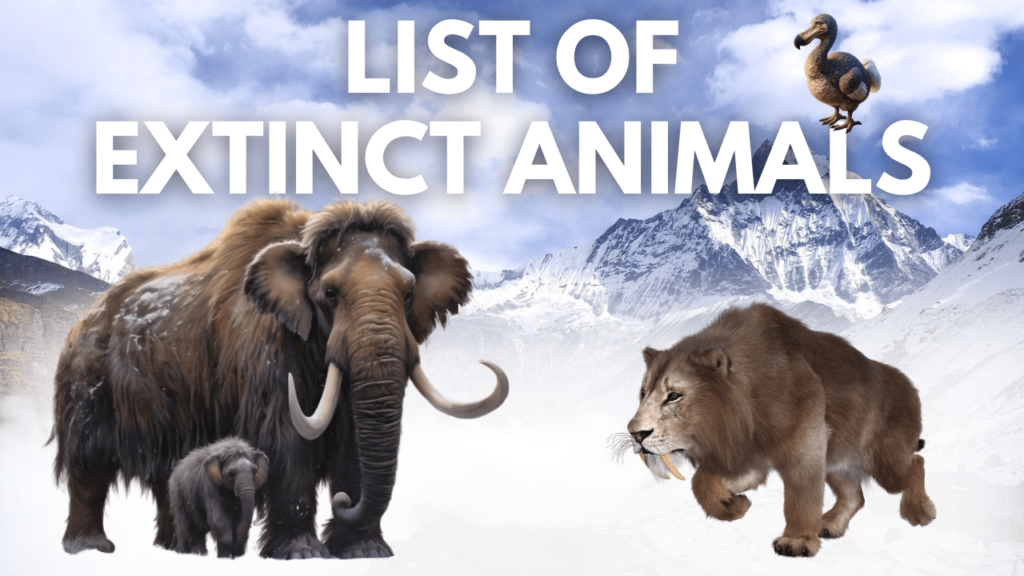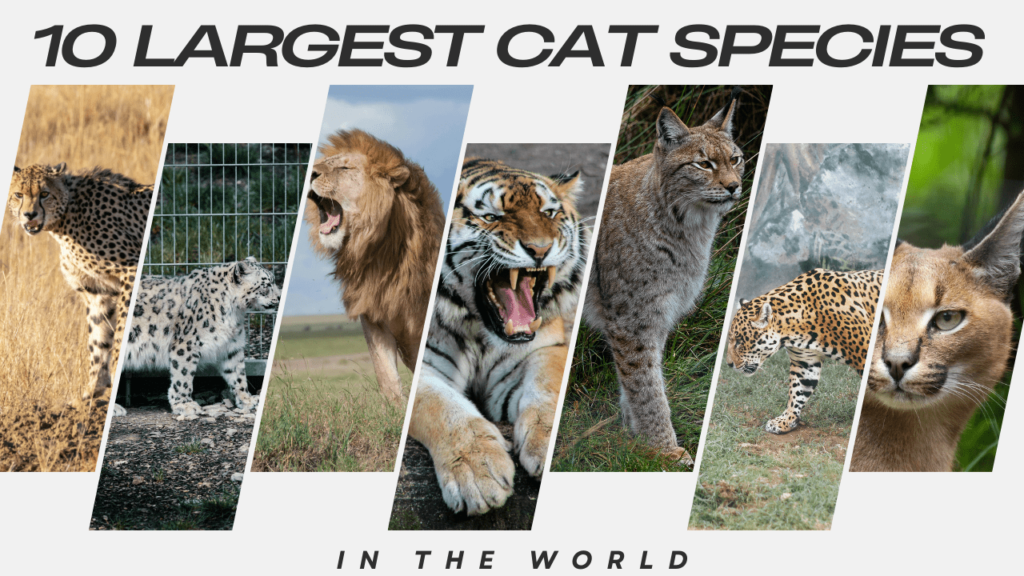Extinction is the permanent loss of a species, a phenomenon that has accelerated due to human activities. From habitat destruction to climate change, human impact has played a significant role in driving many species to extinction. This article will explore 15 notable extinct animals, and 5 animals that have gone extinct in recent years, delving into the causes of their disappearance and the lessons we can learn to prevent future extinctions.
Did you know that on average, a species goes extinct every 20 minutes? This staggering rate of loss raises a crucial question: What happens when species vanish forever, and how does their disappearance affect the intricate web of life on our planet?
Definition of Extinct Animals:
An extinct animal is a species that no longer exists anywhere on Earth. Extinction occurs when the last individual of a species dies, leading to the complete disappearance of that species from the planet.
Unlike extinct animals, those that are endangered or critically endangered are still in existence but face severe threats that could lead to their extinction if not addressed.
Importance of Studying Extinct Species:
Understanding extinct species provides valuable insights into historical biodiversity and the factors that contribute to a species’ demise. This knowledge helps scientists and conservationists develop strategies to protect endangered species and prevent future extinctions. Studying extinct species also helps us understand the impact of environmental changes and human activities on ecosystems.
Top 15 Extinct Animals and Their Stories
Here is a List of Extinct Animals:
1. Dodo (Raphus cucullatus)
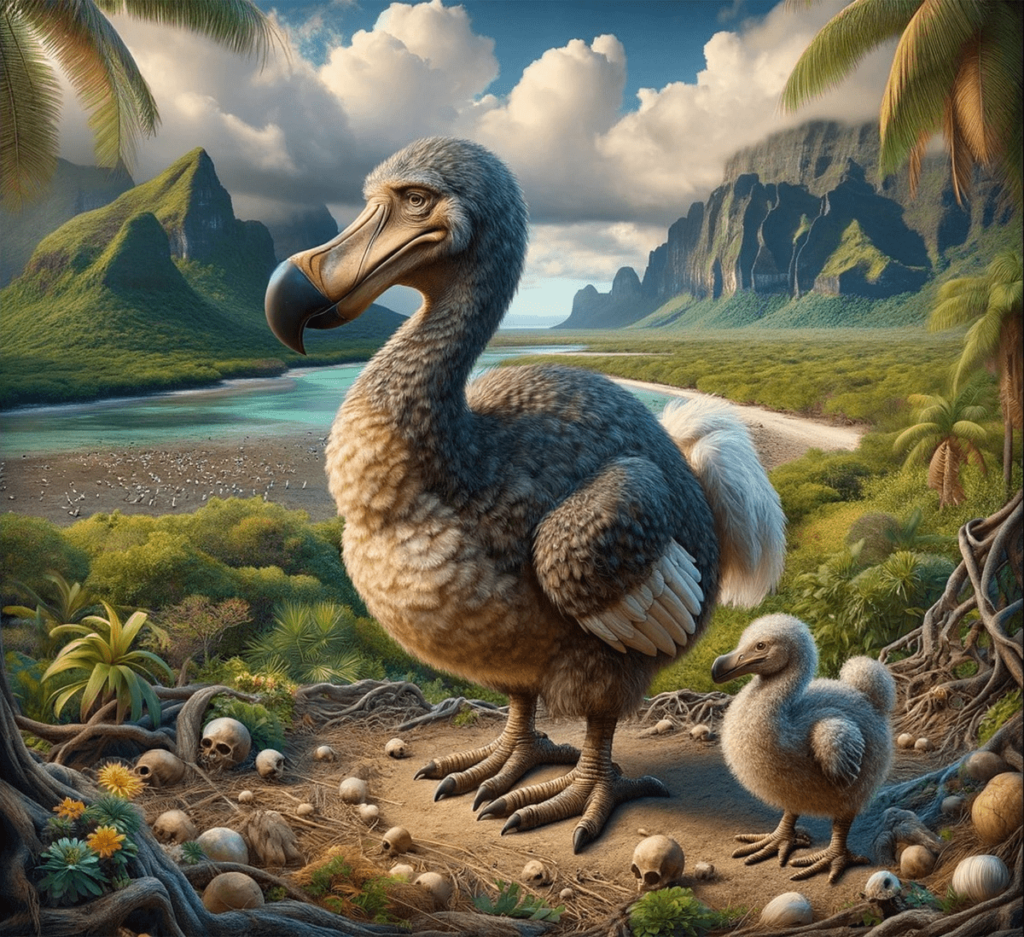
- Common Name: Dodo
- Scientific Name: Raphus cucullatus
- Family Name: Columbidae
- Type: Bird
- Habitat: Mauritius
- Diet: Fruits, Seeds
- Description: The Dodo was a flightless bird native to Mauritius, with a large body and small wings. It had a distinctive hooked beak and was about 1 meter (3.3 feet) tall. Its diet consisted primarily of fruits and seeds.
- Reasons for Extinction: The Dodo went extinct due to overhunting by sailors and introduced predators like rats, pigs, and monkeys, which preyed on its eggs and competed for food resources.
- First Discovered: 1598
- Year of Extinction: 1681
- Closest Relatives: The Dodo’s closest relatives are the pigeons and doves, particularly the Nicobar pigeon.
2. Woolly Mammoth (Mammuthus primigenius)

- Common Name: Woolly Mammoth
- Scientific Name: Mammuthus primigenius
- Family Name: Elephantidae
- Type: Mammal
- Habitat: Northern Europe, Asia, North America
- Diet: Vegetation
- Description: The Woolly Mammoth was a large, shaggy mammal with long, curved tusks and a hump of fat for insulation. It roamed the cold steppes of Northern Europe, Asia, and North America.
- Reasons for Extinction: Climate change leading to habitat loss and overhunting by early humans contributed to its extinction. As the Ice Age ended, the mammoth’s cold habitat shrank, and human hunting pressures increased.
- First Discovered: 1800s (fossil remains)
- Year of Extinction: Approximately 4,000 years ago
- Closest Relatives: The African Elephant and Asian Elephant are the closest living relatives.
Check out Eye-Opening Facts About Elephant’s Physical Abilities
3. Passenger Pigeon (Ectopistes migratorius)
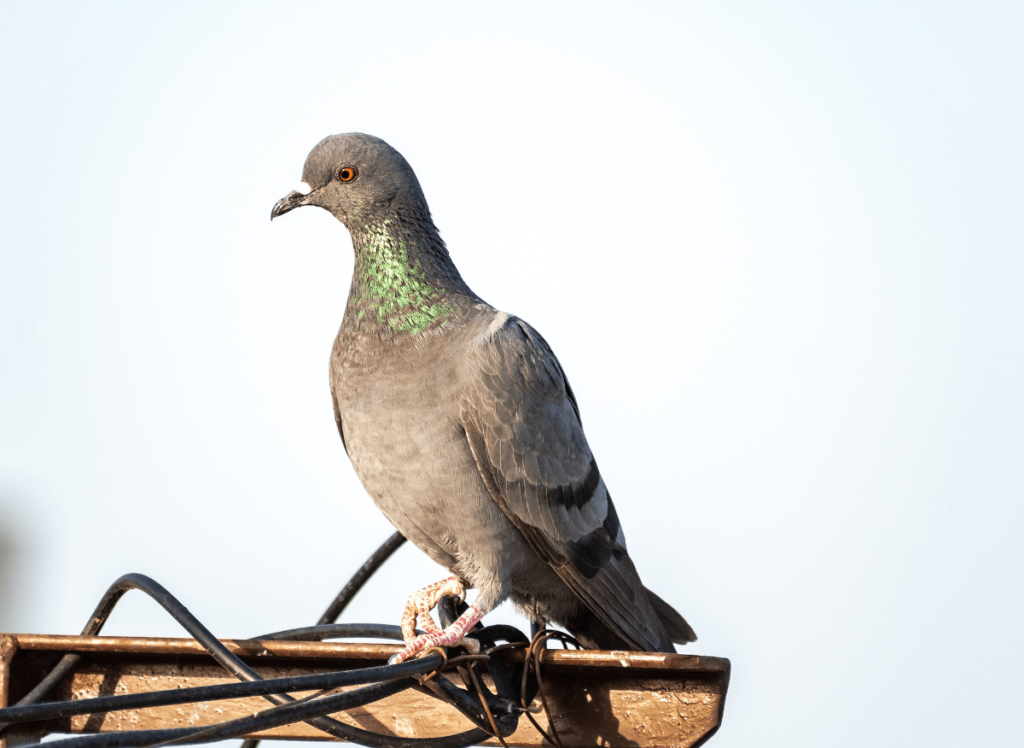
- Common Name: Passenger Pigeon
- Scientific Name: Ectopistes migratorius
- Family Name: Columbidae
- Type: Bird
- Habitat: North America
- Diet: Seeds, Fruits
- Description: The Passenger Pigeon was a migratory bird with a slim body and a long tail. It was once the most numerous bird in North America, known for its large flocks that could darken the sky.
- Reasons for Extinction: Excessive hunting and habitat destruction led to its rapid decline. The pigeons were hunted for their meat and feathers, and their breeding habitats were destroyed by deforestation.
- First Discovered: 17th century
- Year of Extinction: 1914 (last known individual died in captivity)
- Closest Relatives: The Passenger Pigeon’s closest relatives are the Mourning Dove and the Rock Pigeon.
4. Great Auk (Pinguinus impennis)

- Common Name: Great Auk
- Scientific Name: Pinguinus impennis
- Family Name: Alcidae
- Type: Bird
- Habitat: North Atlantic
- Diet: Fish, Squid
- Description: The Great Auk was a flightless bird with a stout body, black and white plumage, and a large bill. It inhabited the North Atlantic and was an excellent swimmer and diver.
- Reasons for Extinction: Overhunting for its feathers, meat, and eggs, along with habitat disturbance, led to its extinction. The birds were hunted to extinction in the mid-19th century.
- First Discovered: 16th century
- Year of Extinction: 1844
- Closest Relatives: The Great Auk’s closest relatives are the razorbill and the puffin.
5. Sabre-Toothed Cat (Smilodon fatalis)
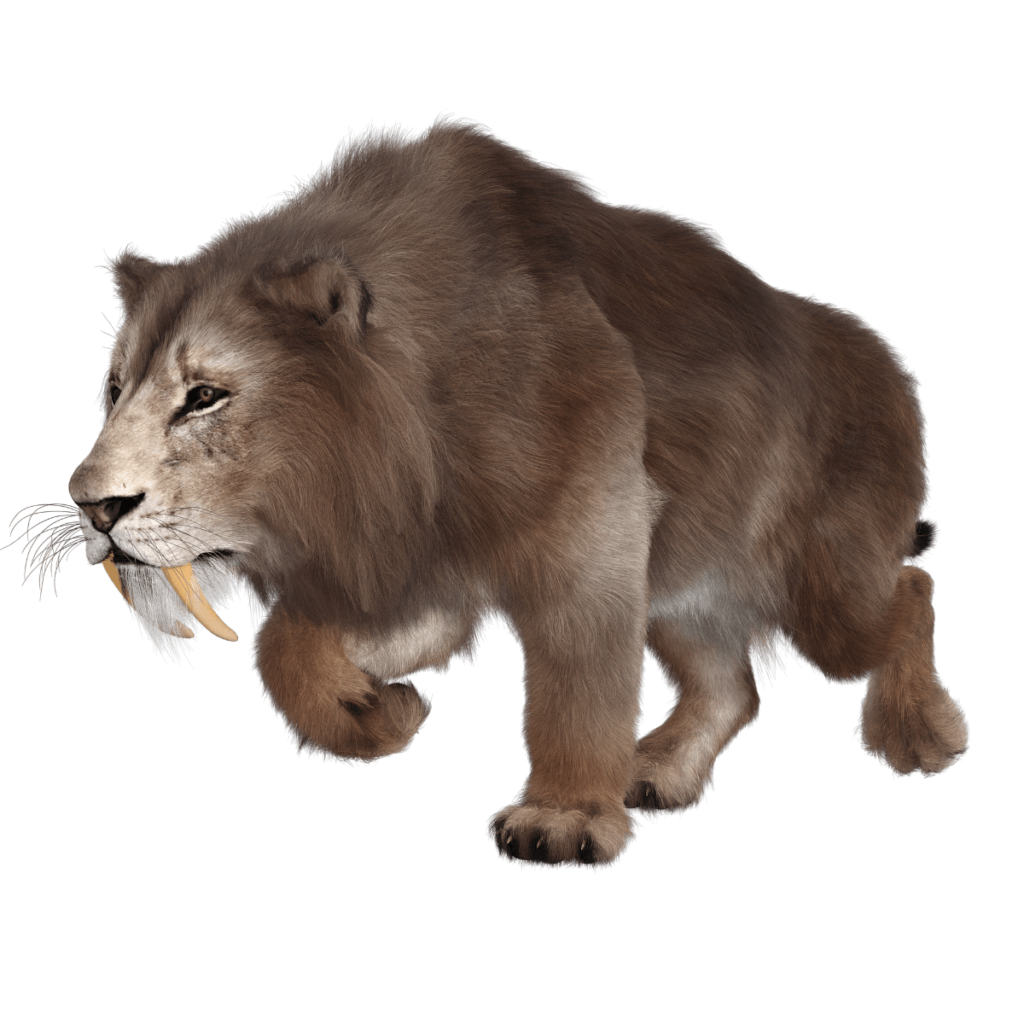
- Common Name: Sabre-Toothed Cat
- Scientific Name: Smilodon fatalis
- Family Name: Felidae
- Type: Mammal
- Habitat: Americas
- Diet: Large Herbivores
- Description: The Sabre-Toothed Cat was known for its long, curved canine teeth and robust build. It roamed the Americas and preyed on large herbivores.
- Reasons for Extinction: Climate change, habitat alteration, and competition with other predators contributed to its extinction. The decline in prey and changing environmental conditions played a major role.
- First Discovered: 1800s (fossil remains)
- Year of Extinction: Approximately 10,000 years ago
- Closest Relatives: The Sabre-Toothed Cat’s closest relatives are modern big cats such as lions and tigers.
Here is a list of Largest Cat Species in the World
6. Moa (Dinornithiformes)
- Common Name: Moa
- Scientific Name: Dinornithiformes
- Family Name: Dinornithidae
- Type: Bird
- Habitat: New Zealand
- Diet: Plants
- Description: Moas were large, flightless birds native to New Zealand. They had long necks and legs, and some species grew up to 3.6 meters (12 feet) tall.
- Reasons for Extinction: Overhunting by Polynesian settlers and habitat destruction led to their extinction. Moas were hunted for their meat, and their forest habitats were cleared.
- First Discovered: 1839
- Year of Extinction: Around 1440 AD
- Closest Relatives: The Moa’s closest living relatives are the ostriches and other ratites like the kiwi.
7. Thylacine (Thylacinus cynocephalus)
- Common Name: Thylacine
- Scientific Name: Thylacinus cynocephalus
- Family Name: Thylacini
- Type: Marsupial
- Habitat: Tasmania, Australia, New Guinea
- Diet: Carnivorous
- Description: Also known as the Tasmanian Tiger, the Thylacine was a marsupial with stripes on its back and a dog-like appearance. It was native to Tasmania, Australia, and New Guinea.
- Reasons for Extinction: Hunting, disease, and habitat destruction contributed to its extinction. The Thylacine was heavily hunted due to its perceived threat to livestock, and habitat loss further endangered it.
- First Discovered: 1800s
- Year of Extinction: 1936 (last known individual died in captivity)
- Closest Relatives: The Thylacine’s closest living relatives are the Tasmanian Devil and other marsupials such as the quokka.
8. Pyrenean Ibex (Capra pyrenaica pyrenaica)
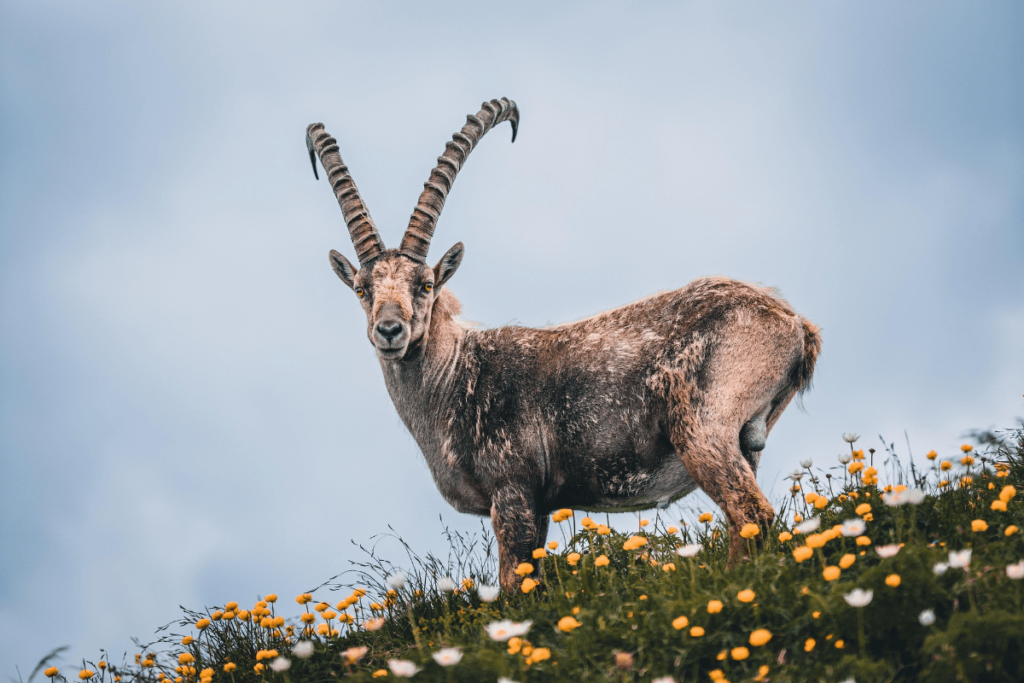
- Common Name: Pyrenean Ibex
- Scientific Name: Capra pyrenaica pyrenaica
- Family Name: Bovidae
- Type: Mammal
- Habitat: Pyrenees Mountains
- Diet: Vegetation
- Description: The Pyrenean Ibex was a subspecies of the Spanish Ibex with impressive curved horns. It lived in the Pyrenees Mountains of Spain and France.
- Reasons for Extinction: Overhunting and habitat loss led to its extinction. The species was hunted extensively for its horns and meat, and habitat destruction reduced its living space.
- First Discovered: 19th century
- Year of Extinction: 2000 (last known individual died in Spain)
- Closest Relatives: The closest living relatives are the other Ibex species, including the Spanish Ibex and the Alpine Ibex.
9. Pinta Island Tortoise (Chelonoidis Abingdon)
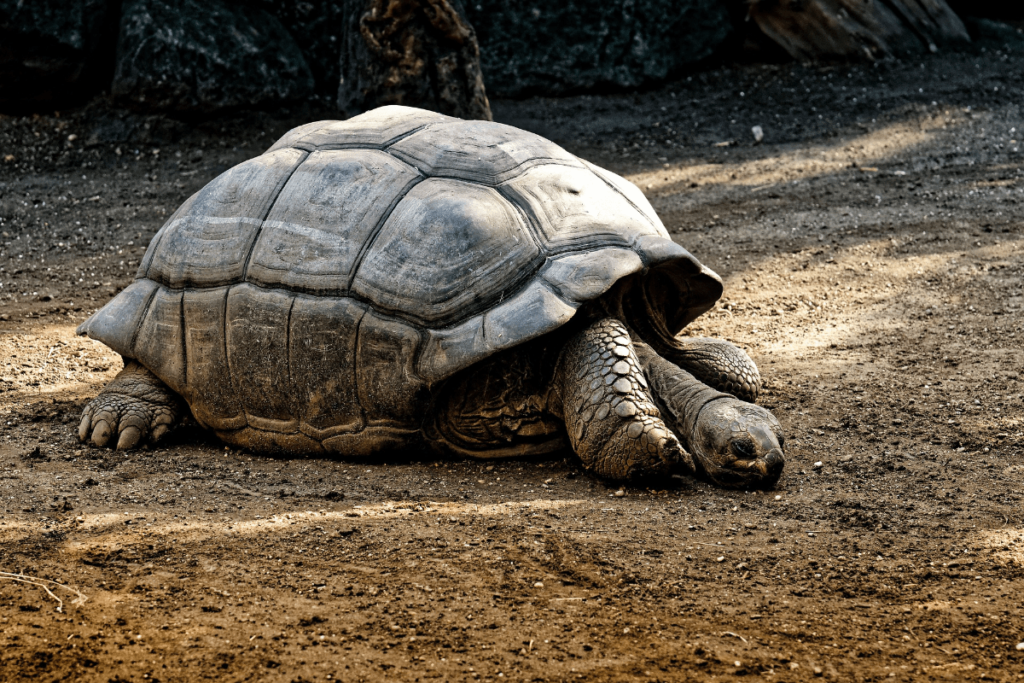
- Common Name: Pinta Island Tortoise
- Scientific Name: Chelonoidis Abingdon
- Family Name: Testudinidae
- Type: Reptile
- Habitat: Galápagos Islands
- Diet: Cacti, grasses, and leaves
- Description: The Pinta Island Tortoise was a giant tortoise species native to the Galápagos Islands. It had a high-domed shell and could live over 100 years.
- Reasons for Extinction: Overhunting by sailors, introduced species like goats that competed for food, and habitat destruction led to its extinction.
- First Discovered: 19th century
- Year of Extinction: 2012 (last known individual, Lonesome George, died)
- Closest Relatives: The closest living relatives are other Galápagos tortoises, such as the Galápagos Giant Tortoise.
Galápagos Giant Tortoise is also mentioned in Top 10 Longest Living Animals
10. Javan Tiger (Panthera tigris sondaica)

- Common Name: Javan Tiger
- Scientific Name: Panthera tigris sondaica
- Family Name: Felidae
- Type: Mammal
- Habitat: Java, Indonesia
- Diet: Carnivorous
- Description: The Javan Tiger was a subspecies of tiger native to the island of Java in Indonesia. It had a smaller body size compared to other tiger subspecies and distinctive dark stripes.
- Reasons for Extinction: Habitat loss due to agricultural expansion and poaching for its pelts led to its extinction. Human encroachment reduced its territory and prey availability.
- First Discovered: 19th century
- Year of Extinction: 1970
- Closest Relatives: The closest living relatives are the other tiger subspecies, including the Bengal Tiger and the Indochinese Tiger.
Check out the difference between Siberian Tiger vs Bengal Tiger
11. Pleistocene Megafauna (Various Species)
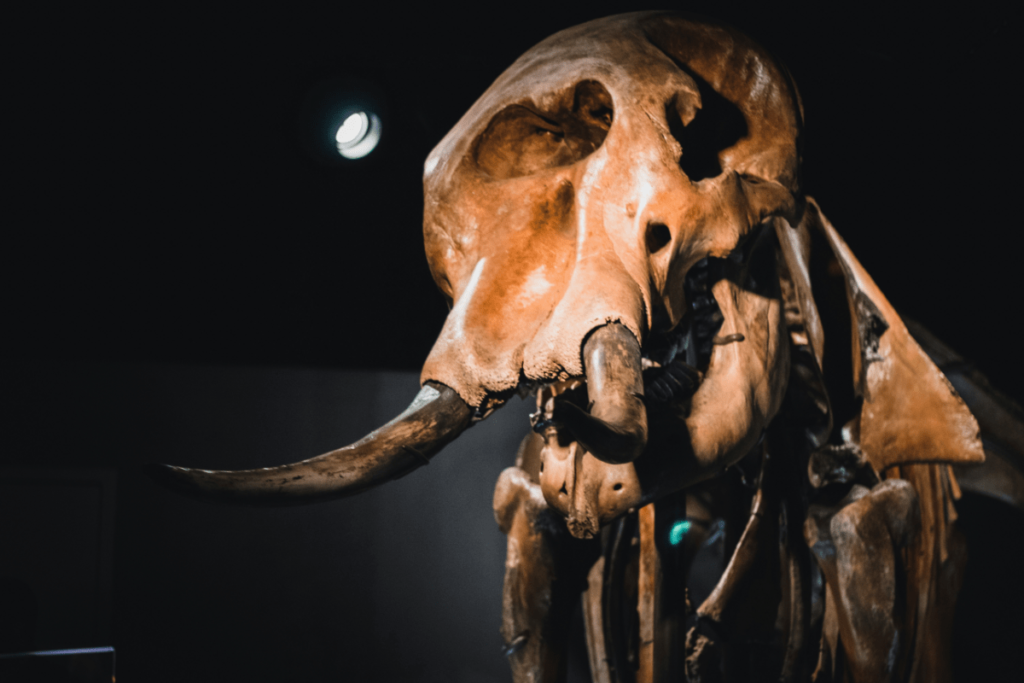
- Common Name: Pleistocene Megafauna
- Scientific Name: Various Species
- Family Name: Various
- Type: Mammals
- Habitat: Various
- Diet: Various
- Description: The Pleistocene Megafauna included a range of large mammals such as mammoths, mastodons, and giant ground sloths. They inhabited various regions across the world during the Pleistocene epoch.
- Reasons for Extinction: Climate change, habitat alteration, and hunting by early humans led to the extinction of these giant mammals. The end of the Ice Age brought about significant environmental changes and increased human hunting pressures.
- First Discovered: Fossil evidence from the 19th century
- Year of Extinction: Approximately 10,000 years ago
- Closest Relatives: Modern large mammals like elephants (for mammoths) and sloths (for ground sloths) are distant relatives.
12. Barbary Lion (Panthera leo leo)
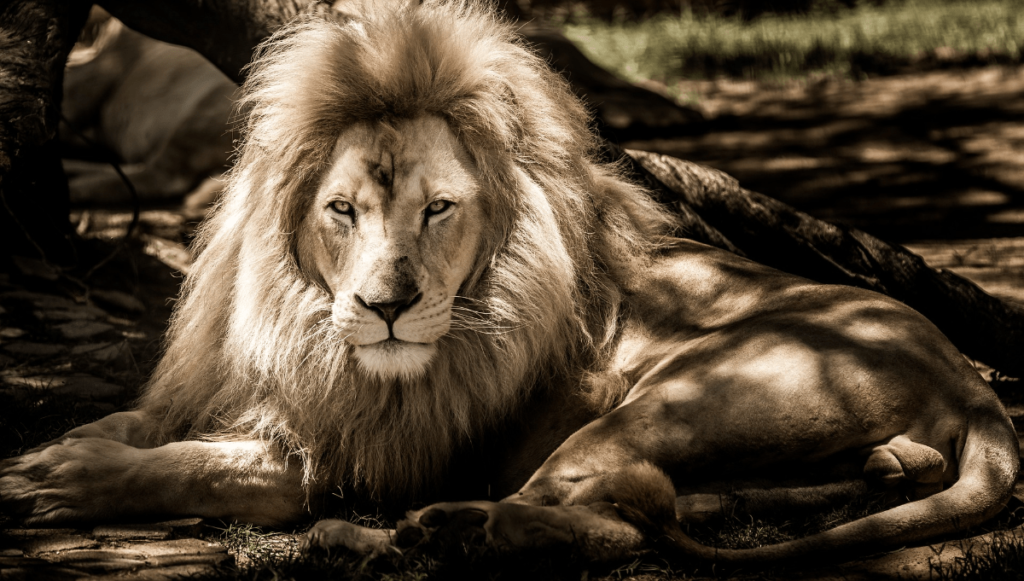
- Common Name: Barbary Lion
- Scientific Name: Panthera leo leo
- Family Name: Felidae
- Type: Mammal
- Habitat: North Africa
- Diet: Carnivorous
- Description: The Barbary Lion was a North African lion subspecies with a distinctive large mane and robust build. It was once found in the Atlas Mountains and surrounding regions.
- Reasons for Extinction: Overhunting and habitat loss contributed to the extinction of the Barbary Lion. The population dwindled due to hunting for sport and the loss of their natural habitat.
- First Discovered: Ancient records from North Africa
- Year of Extinction: 1920s (last known individuals)
- Closest Relatives: The closest living relatives are the modern Asiatic lions and other African lion subspecies.
Learn Why Is the Lion the King of the Jungle
13. Stellar’s Sea Cow (Hydrodamalis gigas)
- Common Name: Stellar’s Sea Cow
- Scientific Name: Hydrodamalis gigas
- Family Name: Dugongidae
- Type: Mammal
- Habitat: Bering Sea
- Diet: Aquatic Vegetation
- Description: Stellar’s Sea Cow was a large marine mammal with a thick, wrinkled hide and a diet consisting mainly of kelp. It was one of the largest sirenians, reaching lengths of up to 8 meters (26 feet).
- Reasons for Extinction: Overhunting by sailors for its meat and blubber led to its extinction. Its slow reproductive rate and limited habitat made it particularly vulnerable.
- First Discovered: 1741
- Year of Extinction: 1768
- Closest Relatives: The closest living relatives are the dugongs and manatees.
14. Caribbean Monk Seal (Neomonachus tropicalis)
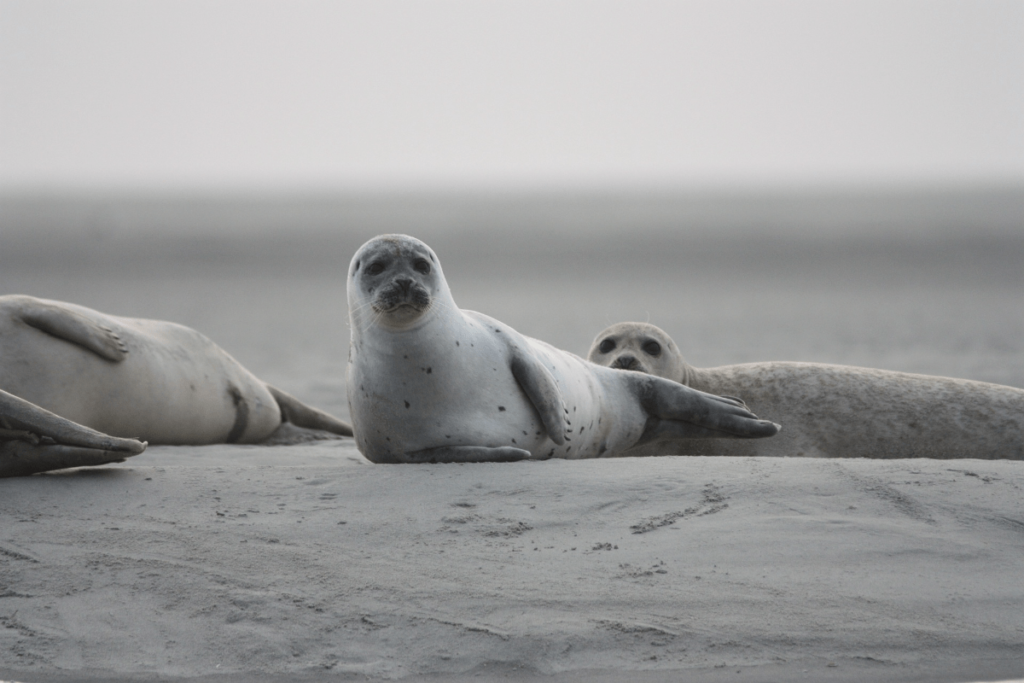
- Common Name: Caribbean Monk Seal
- Scientific Name: Neomonachus tropicalis
- Family Name: Phocidae
- Type: Mammal
- Habitat: Caribbean Sea
- Diet: Fish
- Description: The Caribbean Monk Seal was a medium-sized seal with a streamlined body and a diet primarily consisting of fish. It lived in the warm waters of the Caribbean.
- Reasons for Extinction: Overhunting for its oil and habitat loss led to its extinction. The seal was hunted extensively by European explorers and settlers.
- First Discovered: 1494 (first records by Christopher Columbus)
- Year of Extinction: 1952
- Closest Relatives: The closest living relatives are the Mediterranean Monk Seal and the Hawaiian Monk Seal.
15. Labyrinthodont (Various Species)
- Common Name: Labyrinthodont
- Scientific Name: Various Species
- Family Name: Various
- Type: Amphibian
- Habitat: Various
- Diet: Various
- Description: Labyrinthodonts were a diverse group of prehistoric amphibians known for their complex tooth structures. They lived from the late Paleozoic to the early Mesozoic eras and ranged in size and shape.
- Reasons for Extinction: Climate changes and competition from emerging reptilian species contributed to their extinction. The changing environment and competition with early reptiles led to their decline.
- First Discovered: Fossil evidence from the 19th century
- Year of Extinction: Approximately 250 million years ago
- Closest Relatives: Modern amphibians, such as frogs and salamanders, are distant relatives.
Table of Extinct Animals:
| Common Name | Scientific Name | Family Name | Type | Habitat | Diet | Found In | Reasons for Extinction |
|---|---|---|---|---|---|---|---|
| Dodo | Raphus cucullatus | Columbidae | Bird | Mauritius | Fruits, Seeds | Mauritius | Overhunting, introduced predators |
| Woolly Mammoth | Mammuthus primigenius | Elephantidae | Mammal | Northern Europe, Asia, NA | Vegetation | Eurasia, NA | Climate change, overhunting |
| Passenger Pigeon | Ectopistes migratorius | Columbidae | Bird | North America | Seeds, Fruits | NA | Hunting, habitat destruction |
| Great Auk | Pinguinus impennis | Alcidae | Bird | North Atlantic | Fish, Squid | North Atlantic | Overhunting, habitat disturbance |
| Sabre-Toothed Cat | Smilodon fatalis | Felidae | Mammal | Americas | Large Herbivores | Americas | Climate change, habitat loss, competition |
| Moa | Dinornithiformes | Dinornithidae | Bird | New Zealand | Plants | New Zealand | Overhunting, habitat destruction |
| Thylacine | Thylacinus cynocephalus | Thylacini | Marsupial | Tasmania, Australia, New Guinea | Carnivorous | Tasmania, NG | Hunting, disease, habitat destruction |
| Pyrenean Ibex | Capra pyrenaica pyrenaica | Bovidae | Mammal | Pyrenees Mountains | Vegetation | Spain, France | Overhunting, habitat loss |
| Pinta Island Tortoise | Chelonoidis Abingdon | Testudinidae | Reptile | Galápagos Islands | Cacti, grasses, and leaves | Galápagos | Overhunting, introduced species, habitat destruction |
| Javan Tiger | Panthera tigris sondaica | Felidae | Mammal | Java, Indonesia | Carnivorous | Java | Habitat loss, poaching |
| Pleistocene Megafauna | Various Species | Various | Mammals | Various | Various | Various | Climate change, human hunting |
| Barbary Lion | Panthera leo leo | Felidae | Mammal | North Africa | Carnivorous | North Africa | Overhunting, habitat destruction |
| Stellar’s Sea Cow | Hydrodamalis gigas | Dugongidae | Mammal | Bering Sea | Aquatic Vegetation | Bering Sea | Overhunting, habitat destruction |
| Caribbean Monk Seal | Neomonachus tropicalis | Phocidae | Mammal | Caribbean Sea | Fish | Caribbean | Overhunting, habitat loss |
| Labyrinthodont | Various Species | Various | Amphibian | Various | Various | Various | Climate change, competition with reptiles |
Recently Extinct Animals:
Here is a list of extinct animals that have disappeared in the past few years:
16. Splendid Poison Frog (Osteopilus speciosus)
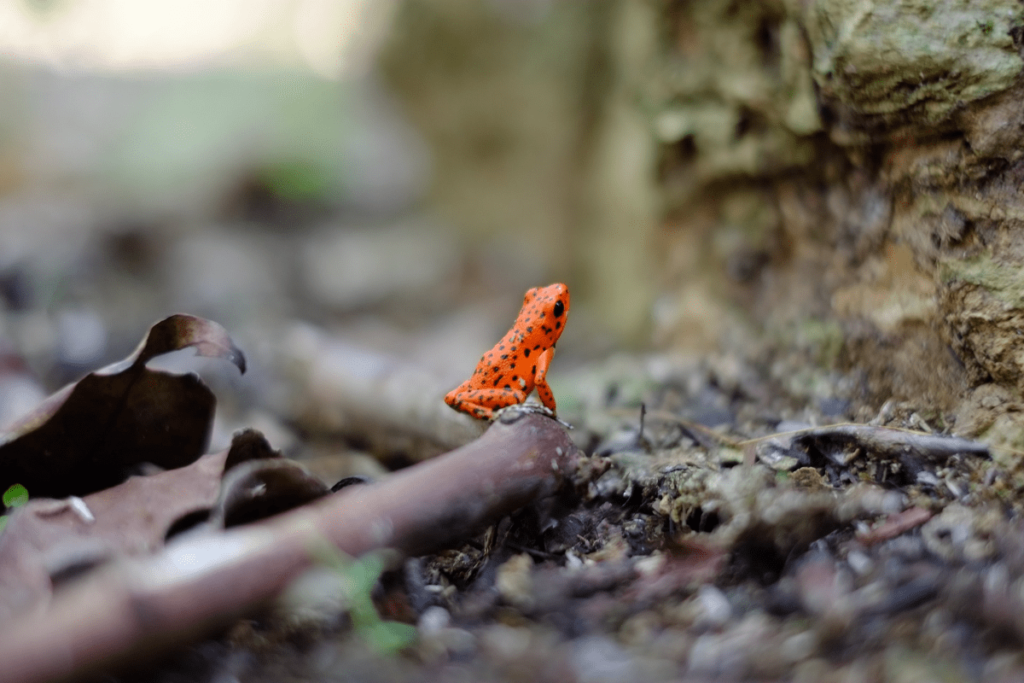
- Common Name: Splendid Poison Frog
- Scientific Name: Osteopilus speciosus
- Family Name: Hylidae
- Type: Amphibian
- Habitat: Puerto Rico
- Diet: Insects
- Description: The Splendid Poison Frog was a brightly colored amphibian native to Puerto Rico. It was known for its striking blue and yellow coloration.
- Reasons for Extinction: Habitat loss due to deforestation and the chytrid fungus epidemic contributed to its extinction. The disease caused severe declines in amphibian populations worldwide.
- First Discovered: 1980s
- Year of Extinction: 2021
- Closest Relatives: Other poison dart frogs in the Dendrobatidae family.
17. Spix’s Macaw (Cyanopsitta spixii)
- Common Name: Spix’s Macaw
Scientific Name: Cyanopsitta spixii
Family Name: Psittacidae
Type: Bird
Habitat: Brazil (Gallery forests along the Rio São Francisco)
Diet: Seeds, nuts, fruits
Description: Spix’s Macaw, also known as the Little Blue Macaw, was a small, vibrant blue parrot native to Brazil. It gained fame due to its striking appearance and its role in the movie “Rio.”
Reasons for Extinction: The primary drivers of its extinction in the wild were habitat destruction and illegal trapping for the pet trade. The last known wild individual was seen in 2000, and the species was declared extinct in the wild by 2020. Captive breeding programs are ongoing to reintroduce the species.
First Discovered: 1819
Year of Extinction: 2020 (Declared extinct in the wild)
Closest Relatives: Other members of the Psittacidae family, like the Blue-and-Yellow Macaw.
18. Lost Shark (Carcharhinus obsoletus)
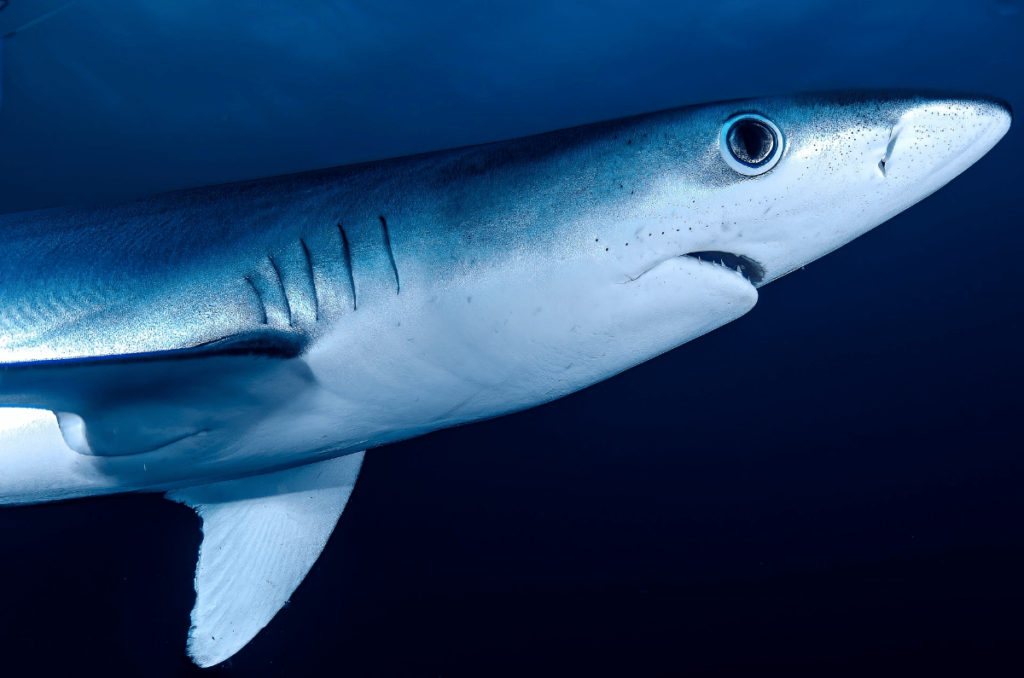
- Common Name: Lost Shark
- Scientific Name: Carcharhinus obsoletus
- Family Name: Carcharhinidae
- Type: Fish
- Habitat: Western Indian Ocean
- Diet: Smaller fish, squid
- Description: The Lost Shark was a large, elusive shark species known for its large size and distinctive features. It was rarely seen by scientists and was considered one of the world’s most mysterious sharks.
- Reasons for Extinction: Overfishing and habitat destruction contributed to its extinction. The species was rarely documented, making it difficult to implement effective conservation measures.
- First Discovered: 1970s
- Year of Extinction: 2019
- Closest Relatives: Other members of the Carcharhinidae family, such as the Tiger Shark and Bull Shark.
19. Jalpa false brook salamander (Pseudoeurycea exspectata)
- Common Name: Jalpa False Brook Salamander
- Scientific Name: Pseudoeurycea exspectata
- Family Name: Plethodontidae
- Type: Amphibian
- Habitat: Mexico
- Diet: Insects, small invertebrates
- Description: The Jalpa False Brook Salamander was a small, lungless salamander native to the cloud forests of Mexico. It was known for its vibrant colors and its role in the ecosystem as an insectivore.
- Reasons for Extinction: Habitat loss due to deforestation and climate change were major factors. Its specialized habitat requirements made it particularly vulnerable.
- First Discovered: 1990s
- Year of Extinction: 2022
- Closest Relatives: Other members of the Plethodontidae family, such as the Eastern Red-backed Salamander.
The Most Recent Animal to Go Extinct
20. Yangtze Giant Softshell Turtle (Rafetus swinhoei)
Common Name: Yangtze Giant Softshell Turtle
Scientific Name: Rafetus swinhoei
Family Name: Trionychidae
Type: Reptile
Habitat: Yangtze River Basin, China
Diet: Aquatic vegetation, small fish, and invertebrates
Found In: China
Reasons for Extinction: Habitat destruction, pollution, hunting, and ineffective conservation measures
First Discovered Year: 1864
Year of Extinction: 2023
Closest Relatives Still Alive: Other species in the Trionychidae family, such as the American Softshell Turtle (Apalone spinifera) and the Indian Softshell Turtle (Nilssonia gangeticus)
Description
The Yangtze Giant Softshell Turtle was once one of the world’s rarest and most critically endangered turtles. Native to the Yangtze River Basin in China, it was notable for its massive size and distinctive soft shell. Despite extensive efforts to save the species, including breeding programs and habitat protection initiatives, the Yangtze Giant Softshell Turtle was declared extinct in 2023.
The last known female of the species died in captivity at a zoo in China in 2019. Conservationists had hoped to revive the population by breeding this last female with the remaining male, but these efforts were unsuccessful due to a combination of factors, including the advanced age of the turtles and the lack of viable offspring.
Last Known Sightings:
The final confirmed sightings of the Yangtze Giant Softshell Turtle were in captivity, with the last female residing in a zoo in China. Conservationists had been attempting to breed her with the last known male, but these efforts were unsuccessful.
Causes of Extinction:
The extinction of the Yangtze Giant Softshell Turtle can be attributed to multiple factors. Habitat destruction from river damming significantly altered the turtles’ natural environment, while pollution and hunting further compounded the threat. The failure of conservation efforts, such as ineffective breeding programs and insufficient habitat protection, ultimately led to the species’ extinction.
Frequently Asked Questions:
1. Is It Possible to Revive Extinct Animals?
Reviving extinct animals, also known as de-extinction, is theoretically possible through techniques such as cloning or genetic engineering. However, these methods face significant scientific, ethical, and practical challenges. Success stories are rare, and efforts are ongoing to understand the feasibility and implications of such projects.
2. Animals That Went Extinct That They Are Bringing Back:
Some species that have been subjects of de-extinction efforts include the Woolly Mammoth and the Passenger Pigeon. Scientists are working on genetic reconstruction and breeding techniques to potentially reintroduce these species into their former habitats.
3. How Did the Godzilla Species Get Extinct?
The “Godzilla” species is a fictional reference rather than a real extinct species.
4. Extinct Animals the Native Americans Saw:
Native Americans observed and documented various extinct animals, including the Mastodon and the Saber-toothed Cat. These species were part of their environment before becoming extinct, and their remains have been found in archaeological sites.
5. How Many Species Go Extinct in an Average Day?
Estimates suggest that approximately 150-200 species go extinct every day due to factors like habitat destruction, climate change, and human activity. This rate is concerning and highlights the urgent need for conservation efforts.
6. How Many Species Go Extinct Every Year?
On average, around 50,000 species are estimated to go extinct each year. This rate is influenced by ongoing environmental pressures and habitat loss, making conservation and protection efforts crucial for biodiversity.
Conclusion
The extinction of species is a stark reminder of the delicate balance of our planet’s ecosystems. Each extinct animal tells a story of how environmental changes, human activities, and natural factors can alter the course of life on Earth. As we reflect on these 15 notable extinct animals, from the majestic Woolly Mammoth to the enigmatic Thylacine, we gain insight into the complex interactions that sustain life. Researchers use fossils and historical records to study animals that are extinct and understand their role in past ecosystems. Understanding their histories and the causes behind their disappearances is crucial not only for honoring their memory but also for guiding current conservation efforts.
The extinction of species is a profound loss, but it also presents an opportunity for us to make a difference. By staying informed about the factors that lead to extinction and supporting conservation initiatives, we can work together to protect the wildlife that still remains. Share this article to spread awareness, and join local and global conservation efforts to ensure that future generations can experience the wonder of our planet’s biodiversity. Comment below with your thoughts on these extinct species and how we can prevent future losses.
What We Can Learn from Extinct Species
Researchers are constantly updating the list of what animals are extinct as new discoveries and evidence come to light. Studying extinct species offers invaluable lessons for contemporary conservation efforts. Here are key takeaways:

Understanding Ecosystem Dynamics:
Extinct species provide a window into past ecosystems, helping us understand how changes in climate and environment can affect species survival. This knowledge aids in predicting and mitigating similar impacts on current wildlife. Efforts to protect all extinct animals often involve researching their past habitats and learning from their extinction to safeguard present-day species.
Identifying Human Impact:
The role of human activities, such as hunting, habitat destruction, and introduction of invasive species, has been a significant factor in many extinctions. Recognizing these patterns emphasizes the need for responsible environmental stewardship and sustainable practices.
Conservation Strategies:
By examining the causes of extinction, we can develop more effective conservation strategies to protect endangered species. Animals that went extinct due to human activities often serve as cautionary tales for modern conservation efforts. Lessons learned from past extinctions can guide efforts to preserve habitats, control invasive species, and address climate change.
Biodiversity Importance:
The loss of any species impacts the broader ecosystem. Each species plays a role in its habitat, and their absence can lead to unforeseen consequences. Preserving biodiversity is essential for maintaining ecosystem health and resilience.
Educational Opportunities:
Extinct species highlight the importance of education in fostering a conservation ethic. Learning about past extinctions can inspire individuals and communities to engage in conservation and take action to protect vulnerable species.
By studying these extinct animals, we not only honor their legacy but also equip ourselves with the knowledge needed to safeguard our planet’s future.
